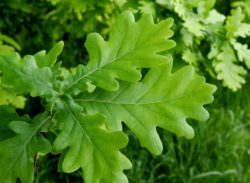The bright ways forests affect their environment
For decades scientists have tried to find out why forests emit the volatile gases that give pine forests their distinctive smell. A new study led by LEAF scientists at the University of Leeds might help us understand the reasons.
Particles in the atmosphere can scatter sunlight, causing light at the Earth’s surface to come from many different directions, rather than just directly from the sun. This extra diffuse light benefits trees and forests by illuminating leaves that would be otherwise be shaded and enables them to photosynthesise.
 The study, published today in Nature Geoscience, found that volatile gases emitted by forests form particles in the atmosphere and increase the amount of diffuse light reaching the trees. These gases, known as biogenic volatile organic compounds (BVOCs) include isoprene and monoterpenes.
The study, published today in Nature Geoscience, found that volatile gases emitted by forests form particles in the atmosphere and increase the amount of diffuse light reaching the trees. These gases, known as biogenic volatile organic compounds (BVOCs) include isoprene and monoterpenes.
Using computer simulations the team were able to show that this increased diffuse sunlight level enhanced the carbon absorbed by the world's forests by over 1 petagram a year, that’s around 10% of global fossil fuel and industry emissions.
Study lead author Dr Alexandru Rap, from the School of Earth and Environment, said: “Amazingly we found that by emitting volatile gases forests are altering the Earth’s atmosphere in a way which benefits the forests themselves. While emitting volatile gases costs a great deal of energy, we found that the forests get back more than twice as much benefit through the effect the increased diffuse light has on their photosynthesis”.
 To validate their findings, the team compared their computer simulation results to measurements made by the AErosol RObotic NETwork (AERONET) from all over the world.
To validate their findings, the team compared their computer simulation results to measurements made by the AErosol RObotic NETwork (AERONET) from all over the world.
Dr Carly Reddington, co-author on the study said: “Measurements of aerosol optical depth from AERONET tell us how much visible and infrared light is scattered and absorbed by aerosol particles in the atmosphere. Comparing with these measurements allowed us to check that the computer model was able to simulate how much secondary organic aerosol is in the atmosphere and how these particles interact with sunlight”.
It takes plants a lot of energy to synthesise BVOCs, so scientists have long suspected that they must play an important role. It's been suggested previously that the gases are used to help plants signal to one another or to protect against attack from pests; this latest research demonstrates another way that the emission of BVOCs helps plants to alter their local environment so that it suits them better.
Read the full study here.
